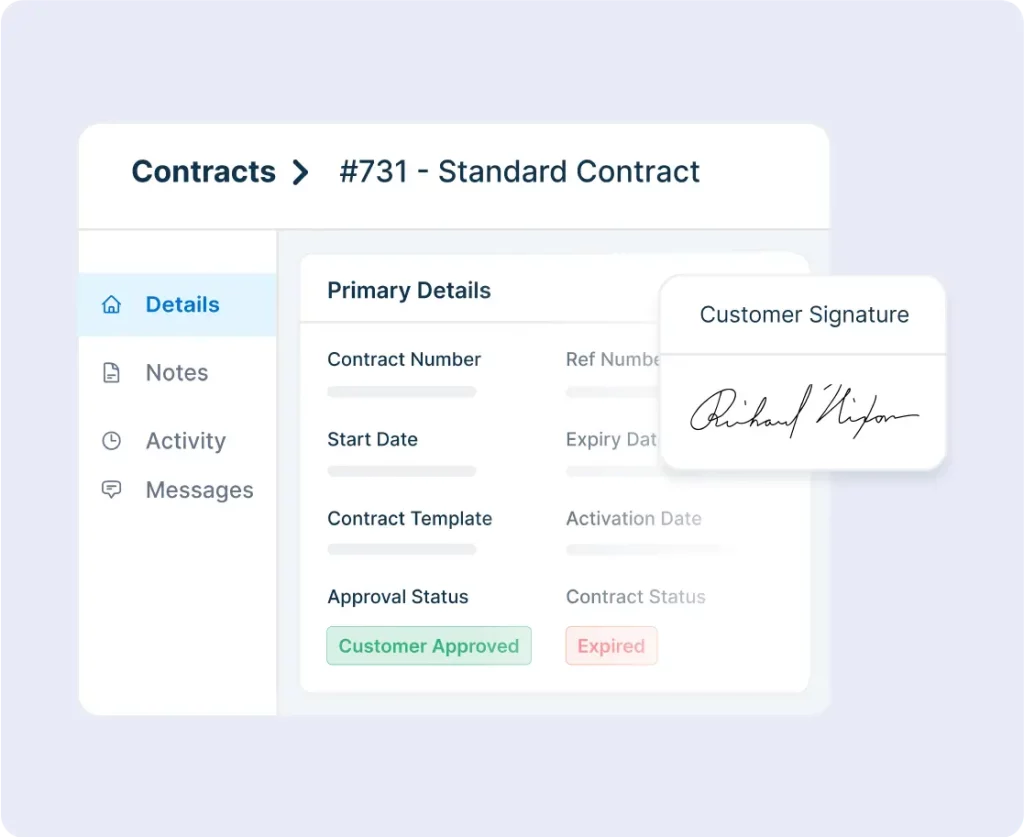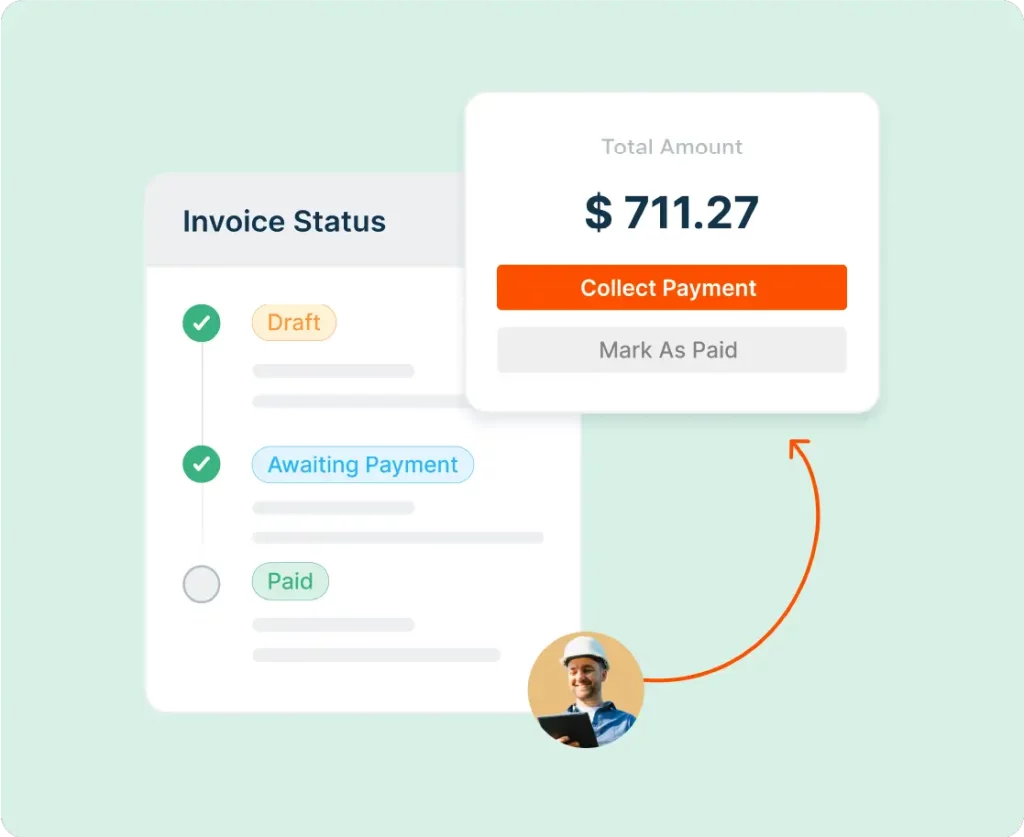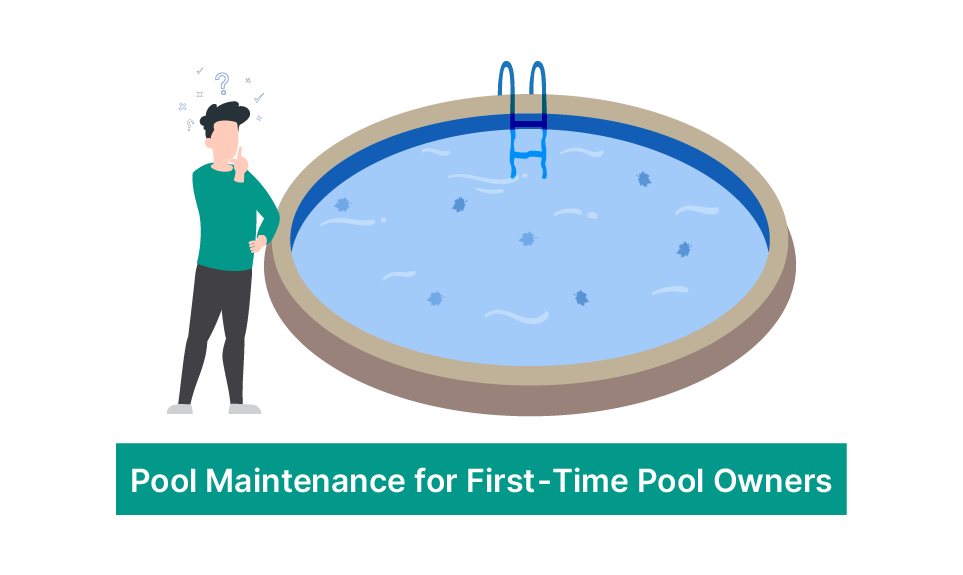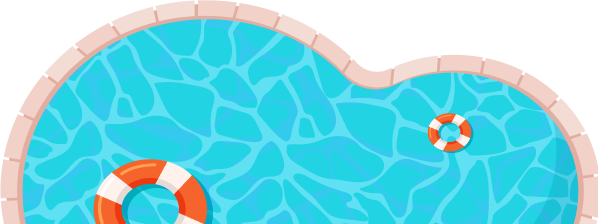Pool Service Software for Streamlined Operations
Automate your end-to-end pool business operations, including construction, repair, and ongoing service maintenance. Streamline your pool service jobs with intelligent dispatching powered by recurring routes, a built-in LSI calculator, and an industry-leading mobile app.

Identify Your Pool Service Operational Gaps in Just Minutes!
Answer 10 questions to pinpoint inefficiencies that may be costing you profits and customer loyalty. Get a free customized report with actionable steps to streamline your pool service operations.

Swimming pool software for service and maintenance providers
- Stop wasting time planning and assigning the same routes every week. Create recurring routes based on location, capacity, and cadence with just a few clicks.
- Provide a better customer experience with the customer portal. Customers can book appointments directly and access completed service reports with before and after pictures.
- Capture current readings, automate chemical calculations, and maintain logs with our in-app LSI calculator.
- Streamline complex contract management and preventative maintenance schedules.
Swimming pool software for manufacturing and installation companies
- Capture consumption metrics and maintain optimal inventory levels with Zuper’s inventory management.
- Optimize your technician routing and save time, money and fuel.
- Support your field team in remote areas. Offline mode allows them to continue accessing job details, checklists and customer information without a stable connection.
- Track costs, manage budgets and keep pool installations on track with work order-based project management.
Our Valued Customers






Automated the scheduling and dispatching process
In the beginning, we used several tools to manage our business. It was difficult to keep track of all the different tools and to make sure that we were using them in the most efficient way possible. Enter Zuper, and we’ve made the best use of the scheduling and dispatching process.
Manny, Head of Field Service Operations, Namco pools

Experience Zuper in action
Streamline your pool business management processes with Zuper. See how it works.
Level Up The Performance Of Your Pool Service Business
Industry-leading mobile app for effective pool service management
Empower your pool technicians with the industry-leading mobile app to perform their jobs effectively, whether managing routine cleanings, chemical balancing, or complex repairs.
- Accurately capture current readings, automate chemical amount calculations, and maintain logs with the built-in LSI calculator.
- Get a clear and organized view of their schedule, including job information, customer preferences, and tasks.
- Find the quickest and most efficient routes to customer locations, saving time and fuel.
- Continue working in locations with limited or no internet connectivity using offline mode.


Intelligent dispatching for efficient pool service management
Streamline recurring maintenance jobs and experience automated dispatching with complete visibility into jobs, resources, and locations.
- Automate job schedules, customize recurrence patterns, assign the right technician, and ensure smooth invoicing and payments
- Dispatch technicians automatically by considering job volume, service territories, teams, schedules, skillsets, performance, customer preferences, and geo-proximity.
- Create recurring routes based on location, capacity, and cadence with a few clicks. Move jobs easily between routes to accommodate last-minute changes.
End-to-end asset management for streamlined pool service management
Track the complete lifecycle of assets with comprehensive contract management and automated planned preventive maintenance.
- Enable customers to request installation, repair, and maintenance services through the customer portal.
- Share completed service reports with the customer, including before and after pictures.
- Maintain all service agreements, pricing, and customer terms in one centralized system.
- Implement preventive maintenance schedules to avoid costly repairs and ensure that pools remain in optimal condition.

Swimming Pool And Hot Tub Services Industry Resource
Pool Maintenance for First-Time Pool Owners
Summers are the time for fun at the pool—holding parties, getting the perfect tan, and performing tricks on a diving board? What fun! But if your fun is going to last, then you need to perform regular maintenance on your pool.
Learn More...How One Pool Company Is Using Its Field Service Management System to Service Regionally and Sell Nationally
Small businesses are an engine of growth in the U.S. accounting for 99.9% of all companies, delivering 46% of the nation’s GDP, and employing 45.9%...
Learn More...Investing In Field Service Technology With Kellan Carter
It’s no secret that consumer expectations are evolving at a break-neck speed. But what may be surprising is just how fast things are changing. In...
Learn More...Frequently Asked Questions
Zuper Field Service Management System is crafted with deep features and intuitive UI to the extent that it can stand toe-to-toe with major pool service software providers like Skimmer. Unlike on-premise pool service software which demand aggressive, multi-year contractual commitments, Zuper offers flexible, pay-as-you-use subscription model pricing.
Yes, pool service software is highly effective in managing recurring pool service appointments. This feature particularly benefits pool service companies that provide regular maintenance services, such as weekly cleanings, chemical checks, or monthly inspections. For instance, Zuper automates recurrence schedules with effective contract management and planned preventive maintenance. It also allows the creation of recurring routes that can be mapped with recurring maintenance jobs, thus automating recurring pool service appointments.
With a good pool estimating software by your side, you can take the trivial out of your billing process once and for all. Empower your technicians to share accurate and timely job estimates with your customers right before they start working. Accepted job estimates and quotations can be auto-converted to invoices right from your technician’s mobile app.
Yes, pool service business software can significantly help track pool service technicians. This capability ensures efficient operations, improves customer satisfaction, and optimizes resource use. With Zuper, customers receive a link to track technicians when they are on their way to the job location. The dispatch board allows dispatchers to track technicians’ real-time location, enabling effective dispatching.
Pool service software is highly effective in managing service bookings, helping pool service companies streamline their scheduling process, improve customer satisfaction, and optimize resource use. With Zuper, customers can book services through the customer portal. This automatically creates a service request on Zuper, enabling pool businesses to manage service bookings effectively.
Pool service software is a specialized field management tool designed to help pool service companies streamline and automate various aspects of their business operations. This type of software caters specifically to the needs of businesses that provide pool maintenance, repair, installation, and cleaning services. Pool service software is a crucial tool for pool service companies looking to enhance their operational efficiency, improve customer satisfaction, and grow their business.
Zuper is the best field service management software for fast-growing pool businesses looking to streamline their installation, repair, and maintenance processes. With the industry-leading mobile app, pool technicians can automate chemical calculations with the built-in LSI calculator. The newest feature allows dispatchers and back-office teams to create recurring routes and map them with recurring jobs, thus automating maintenance schedules. Scale your pool business with software that can be customized to suit your needs. From improving efficiency to boosting customer satisfaction, Zuper equips pool companies with the technology they need to thrive in a competitive market.



